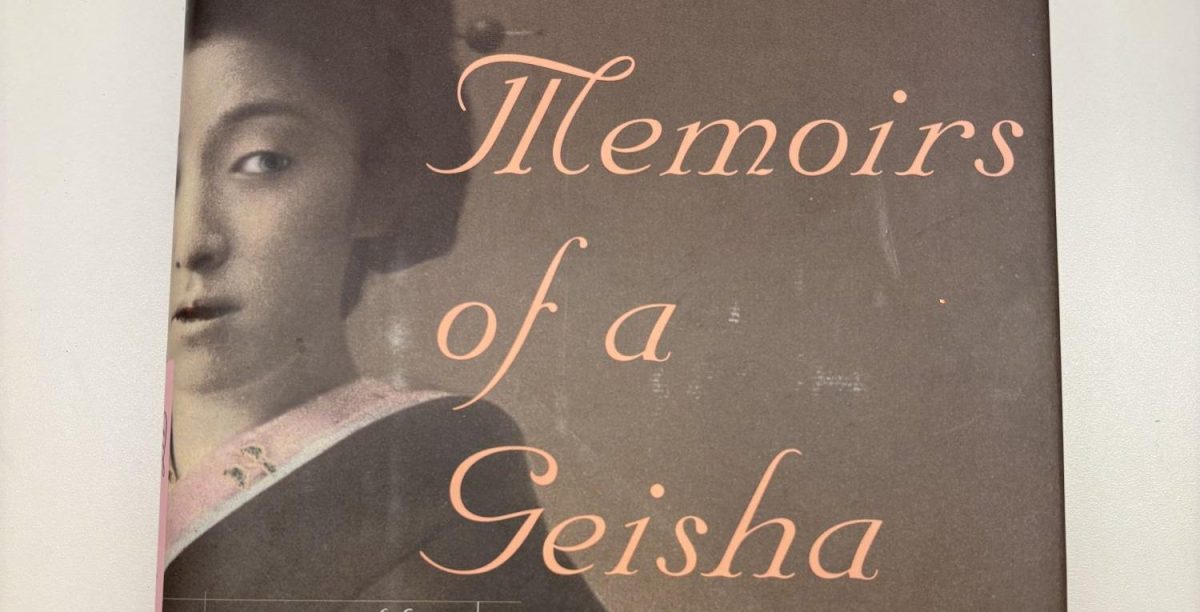The beloved novel Memoirs of a Geisha by Arthur Golden tells the tale of a young Japanese girl named Chiyo, who is unexpectedly transported to Gion, Kyoto in hopes of becoming a geisha. The word geisha refers to a title given to highly regarded Japanese females trained in dance, music, singing, entertainment, and the art of conversation and hospitality.
The novel starts with Chiyo’s childhood, detailing her tough beginnings in life in her family’s ‘tipsy house by the sea.’ During her early childhood, Chiyo lived in the impoverished seaside town of Yorido, known for fishing and seafood. Her family consists of her weary fisherman father, ill mother, and older sister, Satsu. Chiyo has a shy and reserved personality, compared to her older sister. Young Chiyo knows nothing more than her small town and has no grand aspirations in life. She is simply satisfied with her humble home on the cliffside and modest lifestyle.
Yet one fateful day, a man named Mr. Tanaka Ichiro enters her life. While walking into town to gather incense to pray for her sick mother, Chiyo falls face first in front of the prominent businessman. He kindly tends to her bleeding lip and compliments Chiyo on her striking gray-blue eyes. Soon after, Mr. Tanaka introduces Chiyo and her sister Satsu to a woman scouting for future geisha in Gion. Further examination determines the two girls to be healthy and suitable. Mr. Tanaka speaks to their father for permission to take his daughters away, and he agrees, knowing there is not much left at home with a dying mother.
At first, life in Gion proves to be difficult, as Chiyo and Satsu are immediately separated. Chiyo is devastated when Satsu is taken away and tries to run away to find her. Yet the task isn’t as straightforward as she had imagined; Chiyo is placed in a relatively nice okiya, whereas Satsu is relocated to a dirty part of town and forced to work as a prostitute. An okiya is a lodging and entertainment establishment where girls are cared for and supported in their aspirations to become geisha. However, even at the Nitta okiya where Chiyo is living, all is not well.
Chiyo’s beauty is met with jealousy from the star geisha of the okiya, named Hatsumomo. Young Chiyo is constantly tricked into helping Hatsumomo commit devious deeds and then is subsequently framed and reported to Mother, the head mistress of the okiya. Hatsumomo’s jealousy crushes Chiyo’s chance to become an apprentice, and she is stripped of her geisha training. Chiyo lives for almost three years in sorrow, believing she is doomed to a life working as a maid.
During the three year period, I learned that Hatsumomo despises another well known and equally beautiful geisha named Mameha. Eventually, Mameha persuades Mother to let Chiyo resume her geisha training and asks that Chiyo become her younger sister. All girls aspiring to become geisha need an older sister to mentor them and introduce them to society, as well as teach them the knowledge they have learned along the way. Mother is initially puzzled by Mameha’s offer but ultimately agrees, for if Chiyo has Mameha as her older sister, she has a high chance of success.
I will not summarize any further, as to not spoil the rest of this incredible book. However, I will mention a few elements I thoroughly enjoyed. Firstly, I appreciated Golden’s poetic metaphors. They show the unique Japanese perspective of the time and demonstrate how people view the world in connection with nature. For example he writes: “We lead our lives like water flowing down a hill, going more or less in one direction until we splash into something that forces us to find a new course” and “when a stone is dropped into a pond, the water continues quivering even after the stone has sunk to the bottom.” Secondly, Memoirs of a Geisha gave many insights into Japanese culture. Before reading the novel I greatly underestimated the impeccable manners demanded in traditional Japanese culture. Golden illustrates that if two people were to have a disagreement, they would still bow and keep most impolite thoughts to themselves. It is through the accumulation of small moments that the author slowly reveals how Chiyo sees the world.
There were many themes in the novel, yet there were two that stood out: resilience and luck. The main character has multiple moments where she is required to have resilience, such as the abrupt move to Gion, the bad condition of her mother, and frequent setbacks along her journey in becoming a geisha. Nevertheless, she persevered through it all. In addition, the unpredictable nature of life and luck are another key guiding principle in the novel. Our main character is often struck with life altering moments of opportunity; the stream splits, and her life flows down a different path. In later reflection, she is astounded how different her life might have been if others hadn’t realized her potential.
In summary, Memoirs of a Geisha is a remarkable piece of literature that I would recommend to all. If you enjoy drama, Japanese society, and mesmerizing metaphors, you will certainly love this book.

